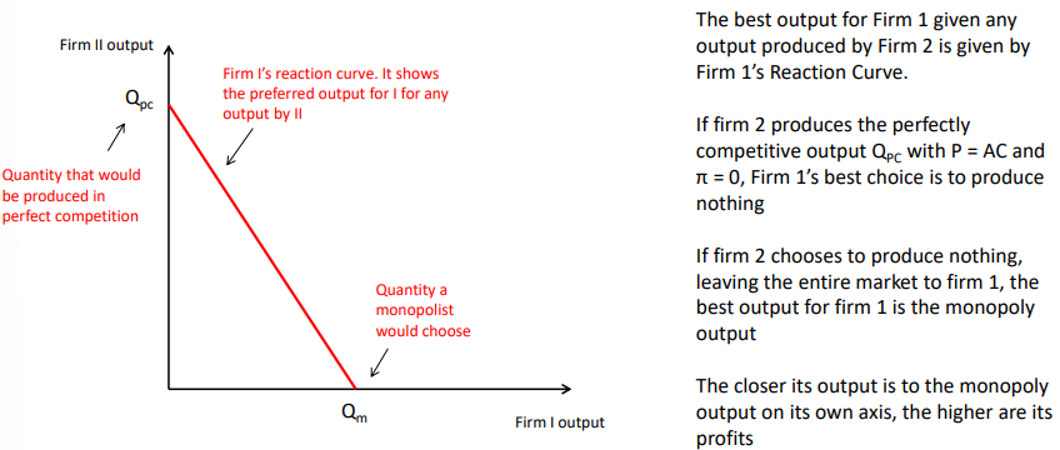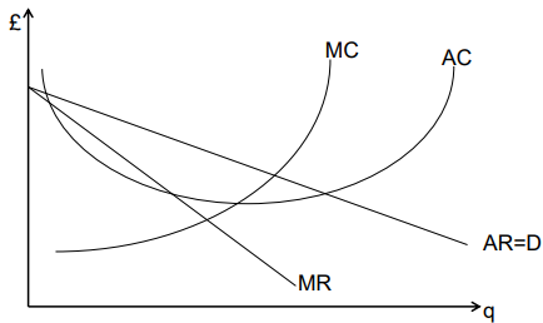Oligopoly and Monopolistic Competition
1/13
There's no tags or description
Looks like no tags are added yet.
Name | Mastery | Learn | Test | Matching | Spaced |
|---|
No study sessions yet.
14 Terms
Oligopoly
a market with many buyers and few sellers
characterised by strategic interaction
e.g. firms compete by producing new products, but must incur significant costs to do so, while the projected return depends of the reactions of their rivals
Cartel
a group of independent market participants who collude with each other in order to improve their profits and dominate the market
usually illegal
Cartel Instability
Since rival firms in the same industry interact with one another repeatedly, it might seem that the tit-for-tat strategy would ensure widespread collusion to raise prices
However, they are still difficulties
One difficulty is that tit-for-tat effectiveness is greatly weakened if there are more than two players in the game
The other difficulty is that even if there are only two firms in an industry, these firms realise that other firms may enter their industry

Two Models for Oligopoly
The Cournot model
The Bertrand model
The Cournot Model
Consider two firms, each of which seeks to maximise its own profit under the assumption that the other firm’s output is given
Here, we focus on a duopoly:
Two producers
But the model can be generalised to more than two producers
Assume:
Highly substitutable products
Firms have the same technology and face the same input costs
Constant unit costs and straight line market demand curve
Reaction Function
The best response of a player is described as a reaction function
If firms maximise profits, the best response is the response that yields the highest profit

Cournot Equilibrium
each firm is setting MC equal to (residual) MR and so is producing to the left of the point at which AC reaches a minimum
industry output is below what a perfectly competitive industry would provide, but above what a monopolist would provide
there is allocative inefficiency
firms earn supernormal profit, but not as much as they could earn if they were to collude (thus effectively becoming a monopoly)

The Bertrand Model
Firms compete on price, allowing the market to determine the volume sold at that price. Each firm assumes the others will charge current prices:
Undercutting: Firms typically see opportunities with Bertrand pricing to just price below their rivals and steal the whole market…
Any firm can do this up so long as the price they set does not fall beneath their Marginal Cost (they would then be making a loss
Bertrand Paradox
For two similar firms producing a highly substitutable output, the Nash equilibrium in prices is P = MC
That is, as long as there are at least two players, the perfectly competitive price emerges
Why Bertrand Paradox?
Suppose MC < P1 < P2
Firm 1 earns (P1 - MC) on each unit sold, while Firm 2 earns nothing
Firm 2 has an incentive to slightly undercut Firm 1’s price to capture the entire market
Firm 1 then has an incentive to undercut Firm 2’s price. This undercutting continues until P1 = P2 = MC …
Reasons Why the Bertrand Paradox will not Hold
The firms have capacity constraints, and output cannot increase sufficiently for price to be driven down to cost
Product differentiation means that the firms’ products are not highly substitutable
The firms understand that the short-term gain from undercutting leads to falling profits in the longer term
Monopolistic Competition
Occurs where there are many buyers and many sellers, and sellers can differentiate their products. This puts a downward slope on each firm’s demand curve
Profits may be earned in the short run, but these are competed away by entry so that in the long run equilibrium supernormal profits are zero. The equilibrium involves lower output and a higher price than under perfect competition

The 5 Sources of Market Power
Exclusive control over important inputs
Patents and copyrights
Government licences or franchises
Economies of scale (Natural monopolies)
Network economies
Market Structure
| Perfect Competition | Monopoly | Oligopoly | Monopolistic Competition |
Size and number of buyers | Many, none of which is large relative to the overall market | Many, none of which is large relative to the overall market | Many, none of which is large relative to the overall market | Many, none of which is large relative to the overall market |
Size and number of sellers | Many, none of which is large relative to the overall market | One | Few, each of which is large relative to the overall market | Many, none of which is large relative to the overall market |
Degree of substitutability of different sellers products | Homogeneous - all the same | No good substitutes | May or may not be differentiated | Heterogenous - diverse |
Extent to which buyers are informed about prices and available alternatives | Well informed | Well informed | May or may not be well informed | May or may not be well informed |
Conditions of entry | Neither technological nor legal barriers | Either technological or legal barriers completely block entry | Technological and legal barriers may or may not exist | Neither technological nor legal barriers |